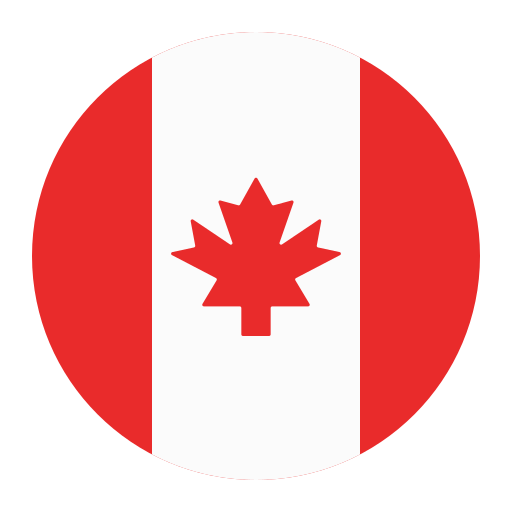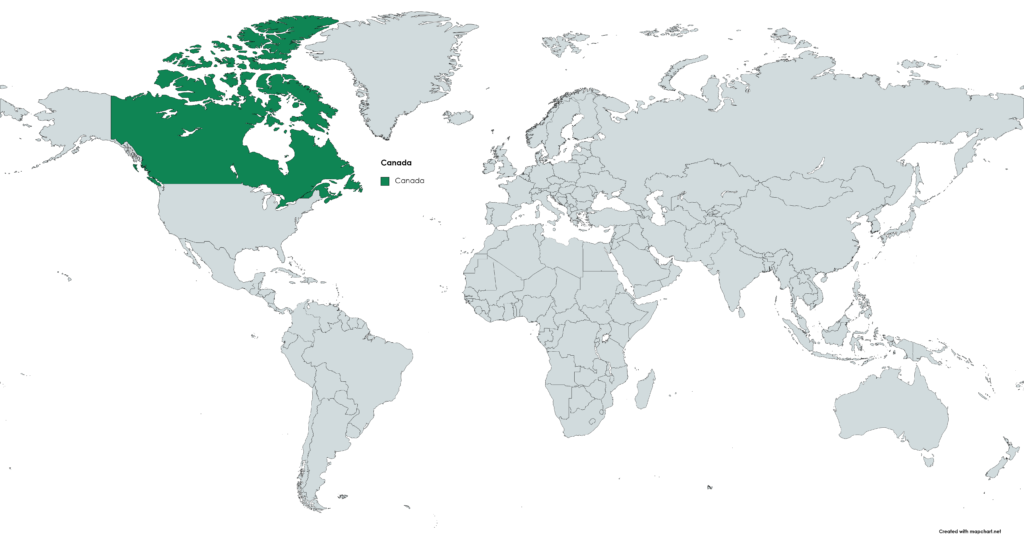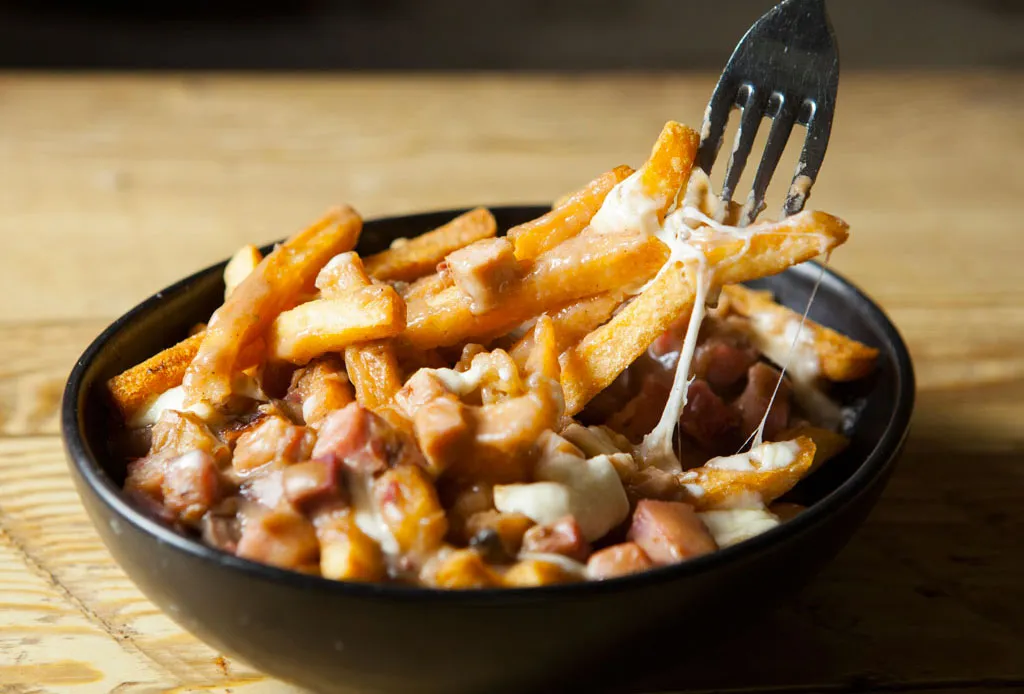Canada travel tips
Canada travel tips: Vast North American country, stunning landscapes, diverse cities, multicultural society, friendly people, and abundant natural beauty, including mountains, lakes, and forests.
Provinces 🌎
Canada travel tips. Here is a list of all the Provinces of the Canada.
Before you go 🛩
Important information you should know before your trip
Info

Capital | Ottawa
Flag Codes
ISO alpha-2 CA, ISO alpha-3 CAN
Currency
Badge | Canadian dollar
CODE | CAD
NUMBER | 124
SYMBOL | $
FRACTION | Penny
Mobile Coverage
Dialing Code | +1
SIM Card
Coverage
3G / 4G / 5G
Mobile Networks | Bell Mobility | EastLink | Freedom Mobile | MTS | SaskTel |

Location
Canada is located in the northern part of the North American continent. It is the second-largest country in the world in terms of land area, after Russia.
Canada is bordered by the United States to the south and northwest, the Arctic Ocean to the north, and the Atlantic Ocean to the east, and the Pacific Ocean to the west. The country is divided into 10 provinces and 3 territories, each with its own unique geography and landscape.
The capital city of Canada is Ottawa, which is located in the eastern part of the province of Ontario, near the border with Quebec. Other major cities in Canada include Toronto, Montreal, Vancouver, Calgary, and Edmonton.
Currency
The official currency of Canada is the Canadian dollar (CAD). The Canadian dollar is divided into 100 cents, with coins available in denominations of 5 cents (nickel), 10 cents (dime), 25 cents (quarter), 50 cents (half-dollar), and 1 dollar (loonie). Banknotes are available in denominations of 5, 10, 20, 50, and 100 dollars.
The Canadian dollar is one of the most commonly traded currencies in the world and is widely accepted in most countries. ATMs are widely available throughout Canada, and most major credit cards are accepted in most places. When traveling to Canada, it is recommended to have a mix of payment options available, including cash, credit cards, and debit cards.
Languages
Canada has two official languages: English and French. Both languages have equal status and are used in federal government institutions, as well as in some provincial and territorial governments.
English is the most commonly spoken language in Canada, with approximately 57% of the population reporting English as their first language. French is the second most commonly spoken language in Canada, with approximately 21% of the population reporting French as their first language.
In addition to English and French, there are also many other languages spoken in Canada, reflecting the country’s diverse population. Other commonly spoken languages include Mandarin, Cantonese, Punjabi, Spanish, Italian, and German, among others.
.
Climate 🌡
The climate of Canada is generally cold and temperate, although it can vary widely depending on the region. Canada is a large country with diverse geography, ranging from the frozen tundra of the Arctic to the temperate rainforests of the Pacific coast to the prairies and boreal forests of central Canada.
In general, the northern parts of Canada experience long, cold winters and short, cool summers, while the southern parts of the country have milder winters and warmer summers. Coastal regions tend to have more moderate temperatures and higher levels of precipitation, while the interior of the country is drier.
Canada is also known for its extreme weather conditions, including heavy snowfall, blizzards, ice storms, and extreme cold. In some regions, temperatures can drop below -40 degrees Celsius (-40 degrees Fahrenheit) during the winter months.
Overall, the climate of Canada is influenced by a variety of factors, including latitude, elevation, ocean currents, and prevailing winds.
Canada travel tips
Traveling in Canada can be a wonderful experience, and here are some useful tips for travelers:
Travel Documentation:
Ensure you have a valid passport. Depending on your nationality, you may also need a visa.
Keep copies of important documents, including your passport, travel insurance, and any necessary visas.
Weather Preparation:
Canada experiences a range of climates. Check the weather for the specific regions and seasons you plan to visit.
Pack layers and be prepared for cooler temperatures, especially in the northern regions.
Health Considerations:
Canadians are generally polite and respectful. Be courteous, and follow local customs and etiquette.
Tipping is customary in restaurants and for services; a standard tip is around 15-20%.
Transportation:
If you’re renting a car, be aware that Canada, like the U.S., drives on the right side of the road.
Public transportation is available in major cities, but it may vary in smaller towns.
Currency and Payments:
The Canadian Dollar (CAD) is the official currency. Inform your bank about your travel dates to avoid any issues with your credit/debit cards.
Credit cards are widely accepted, but it’s a good idea to have some cash, especially in more remote areas.
Emergency Services:
Know the emergency contact numbers, including local police, medical services, and your country’s embassy or consulate.
Americans are generally friendly and approachable. Don’t hesitate to ask for help or directions if needed.
Respect personal space and be mindful of local etiquette in different regions.
National Parks and Outdoor Activities:
Canada boasts stunning national parks. Check for park regulations and any required permits.
If you’re engaging in outdoor activities, inform someone of your plans and be prepared with the appropriate gear.
Healthcare:
Familiarize yourself with the healthcare system. It’s advisable to have travel insurance to cover any medical expenses.
Sales tax is not included in the displayed price in many places. Be prepared for the total cost at the checkout.
Safety Tips:
Canada is generally safe, but it’s always wise to be cautious, especially in urban areas.
Secure your belongings and be aware of your surroundings.
Canada is known for its friendly locals, breathtaking landscapes, and diverse culture. Embrace the unique experiences each region has to offer and enjoy your time exploring this vast and beautiful country.

The best of the best
Canada is a multicultural country with a diverse culinary scene that is influenced by its Indigenous peoples, French and British colonial heritage, and immigrant communities from around the world.

Poutine
A popular Quebecois dish made with French fries, cheese curds, and gravy.

Nanaimo bars
A dessert made with a chocolate and coconut base, custard filling, and chocolate ganache topping.

Maple syrup
A sweet, syrupy liquid made from the sap of maple trees that is often used as a topping for pancakes, waffles, and French toast.
Here are some typical foods of Canada:
Butter tarts – A small pastry filled with a mixture of butter, sugar, eggs, and sometimes raisins or pecans.
Montreal-style bagels – Smaller and sweeter than their New York-style counterparts, these bagels are boiled in honey-sweetened water before being baked in a wood-fired oven.
Tourtiere – A meat pie traditionally made with ground pork and spices, popular in Quebec during the holiday season.
Bannock – A type of bread made from flour, water, and baking powder, often cooked over an open fire.
Salmon – A popular seafood in Canada, particularly on the West Coast, where it is often smoked or grilled.
Ketchup chips – A popular snack food in Canada, potato chips flavored with ketchup seasoning.
BeaverTails – A pastry made from fried dough shaped like a beaver’s tail, typically topped with cinnamon and sugar or other sweet toppings.
These are just a few examples of the many delicious foods you can find in Canada!
Transportation 🚥
More information about this country
Choose your destination 📍🗺
Useful Links ✅


















